Hernán Cortés: History, Life, Accomplishments, & Atrocities Committed
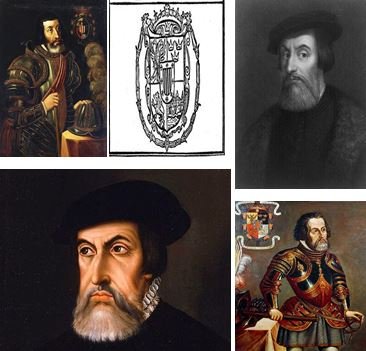
Spanish Conquistador Hernán Cortés – Life and Accomplishments
Most known for invading Mexico and defeating the Aztec Empire in 1521, Hernán Cortés was a Spanish nobleman and famous explorer who helped expand the Empire of Spain into the New World. Why and how did this conquistador vanquish the Aztecs – one of history’s greatest civilizations? Here is everything that you need to know about the life story and accomplishments of Hernán Cortés.
Early life
Hernán Cortés was born in Medellín, Spain, to a family of not so much renowned nobility. Growing up, Cortés was not the strongest of children. Regardless of that he was quite intelligent for his age.
When he was 14, his parents sent him to study Latin at his uncle’s school in Salamanca. Two years into his studies, Cortés abandoned the course and went back home. His decision to abandon school was primarily influenced by news of famed explorer Christopher Columbus’ expeditions into the New World.
Cortés desired nothing than to follow in Columbus’s footstep and become a renowned explorer and Spanish conquistador.
Expeditions to Haiti and Cuba
Cortés’s maiden voyage to the Americas occurred in 1504. He sailed for Hispaniola (modern day Haiti and Dominica Republic). Aged around 19, Cortés arrived in Santo Domingo in 1504. Santo Domingo was the capital of Hispaniola. In the city, he had brief educational spells training to become a lawyer. The late teenager spent the next seven years of his life in Hispaniola. He worked as notary official. Sometimes, he worked on the farm.
In 1511, he signed up to the crew of famous Spanish explorer Diego Velázquez’s expedition to Cuba. While in Cuba, he served as a treasury assistant to Governor Nicolás de Ovando.
For his contribution to the conquest of Cuba, he was rewarded with large parcels of land and Indian slaves. As the years rolled by, Cortés became an influential person in Cuba. He was particularly close to the governor of Cuba, Diego Velázquez. He served as Velázquez’s lieutenant.
Expedition to Mexico
In 1518, Cortes was able to convince Velázquez to let him lead an expedition into Mexico. Velázquez accepted his request and gave Cortés his blessings.
Just a few months before Cortes’s expedition, Velázquez had a change of mind. However, the brave and daring Cortés refused to back down. He proceeded and sailed to Mexico with about 11 ships and over 500 men.
Cortés’s mutiny against the governor of Cuba was not uncommon. Early Spanish colonization of the Americas was rife with mutinies and betrayals. For example, the ship that Cortes boarded on his maiden voyage to the Americas had a captain (Alonso Quintero) who mutinied against his superiors.
In 1519, Cortés’s crew of explorers arrived at place called Yucatan, off the Mexican coast. Looking for wealth and glory, Cortés consistently disobeyed Velázquez’s order to come back home. In addition to fame and glory, Cortés had it at the back of his mind to roll out a massive conversion exercise of the natives to Catholicism.
A month after his arrival at Yucatan, Cortés and his men seized the territory in the name of the Spanish Empire. Along the way, he also engaged in a number of battles with native tribes. He and his priests also converted some of the natives into Christianity. Many of those converts were forced into the faith. Also, he encouraged his men to pillage the land and abuse the conquered natives.
Cortés had several illegitimate children with native Indian women. For example, he and La Malinche had a child called Martín (El Mestizo). After a brief period of time, she learned Spanish. For most part of the time, Malinche served as his interpreter. Her usefulness came in the fact that she was reasonably fluent in Aztec and Mayan languages.
Veracruz Settlement
A few months into his stay on the continent, Cortés proceeded west and established a settlement called, Veracruz. He took some of the locales as his allies. In spite of this, it did not stop Cortés from thinking the indigenous people as culturally and religiously inferior to the Spanish. It was not uncommon for Spanish explorers to have this notion about the natives. They found the practice of human sacrifices by the natives particularly abhorrent.
In September, 1519, he briefly clashed with the Otomis and the Tlaxcalans. In the end, some of those indigenous people later allied with Cortés.
After claiming Veracruz for himself, under the Crown’s name, Cortés destroyed his ships. The rationale behind this was to prevent his men from sailing back. His men, therefore, had only one option – march into the heart of the Aztec Empire, Tenochtitlán.
Invasion of the Aztec Empire

Hernando Cortés invades Tenochtitlan, the Capital of the Aztec Empire, in 1521 | Image: Britannica.com
Cortes first met officials of the Aztec Empire at San Juan de Ulúa in spring 1519. On several occasions he asked for a meeting with Moctezuma II, the ruler (tiatoani) of the Aztecs. The Aztecs refused to have any meeting.
In August 1519, Cortes, along with about 600 men, headed for the Aztec capital, Tenochtitlan. He was also in the company of several hundreds of local tribe men from the Totonacs and the Nahuas.
On his way to Tenochtitlán, he killed several thousands of unarmed noblemen and civilians in Cholula in 1519. His men also burned down a great portion of the city.
In November 1519, Cortes was received by Moctezuma II. The Spanish explorer was given a warm welcome and Cortes entered the city unimpeded. Many say the emperor did this in order to learn the weaknesses of the invading force. However, some historians believe that some Aztecs regarded Cortés as a messenger of the god Quetzalcoatl – the feathered serpent deity of the Aztecs.
Owing to this fascination, Moctezuma dashed Cortés several ounces of gold and other gifts. Consumed by greed, Cortés decided to take Moctezuma hostage.
Why did Hernán Cortés take Moctezuma hostage?
First of all, some historians say that what prompted Hernán Cortés to hold the ruler of the Aztecs hostage was because Cortés received news that some Aztecs had attacked his men. The second and more likely reason is that Cortés wanted more gold for himself.
In 1520, Governor Veláquez sent a number of ships, which were under the command of Pánfilo de Narváez, to relieve Cortés of his command in Mexico. Narváez sailed to Mexico with about a thousand men. While Cortes held Tenochititlán as a prisoner, Cortés was able to rule the entire Aztec people.
Cortés captures Tenochtitlán
About 200 men to stayed behind stay behind in Tenochtitlán while Cortés marched the rest of his men to face off with Pánfilo de Narváez. Even though Narváez had the numerical advantage, Cortés was still able to hand Narváez a crushing defeat. The remaining men of Narváez surrendered and joined Cortes. Now with a relatively bigger troop numbers, Cortes headed back to Tenochtitlán.
Upon arriving, he found the city in a state of civil rife. His lieutenant that he had left behind did a poor job of keeping the peace and order. There was even a massacre in the Great Temple. Shortly after that the people rebelled. In the heat of this rebellion, Moctezuma was murdered on July 1, 1520. The Aztecs became hostile, forcing Cortés to leave the city. He escaped to Tlaxcala. While retreating, he lost about 870 men, as well as a great deal of his looted gold and other treasures.
Majority of the Aztecs had grown fed up with their rulers. In addition to this, many of them were blighted by smallpox that the Europeans brought along with them. Realizing this, Cortés capitalized on the situation and took control of the city in the name of the Crown. After conquering the city, he renamed it Mexico City. He built Mexico City on the ruins of Tenochtitlán.
From 1521-1524, he served as governor of the city. During his reign, Cortés may have been treated unfairly by the Spanish Empire. His work for the Crown was disregarded. His role in the colonization of the New World was watered down by his critics, including Diego Velázquez de Cuéllar, Diego Columbus and Francisco Garay. Veláquez, in particular, did not want Cortes to be governor in Mexico. He worked hard to convince King Charles V of Spain. The king then moved Cortés from civilian duties by promoting him to captain-general.
Some say Cortes acted too entitled and may have been a very vain governor. On so many occasions, he disobeyed to orders of the Crown.
King Charles appointed him as governor, captain general and chief justice of the newly conquered territories in the New World. However, the king kept an eye on him by appointing royals to be his assistant. For his conquests in Mexico, the Spanish Crown rewarded Cortes with a coat of arms.
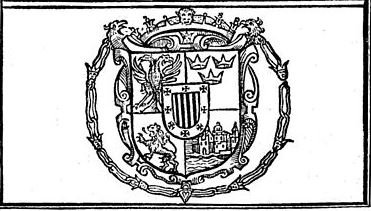
Hernando Cortes crest from Charles V
Honduras Expedition
From 1524 to 1526, Cortes waged war with Cristóbal de Olid – the man who claimed Honduras for himself. Cortes emerged the victor. He pointed finger at Velázquez for his alleged role in Olid’s rebellion. Hence Cortés implored King Charles to arrest Velázquez on the charges of treason.
After his exploits in Honduras, Cortes returned to Mexico only to find out that his power base had been eroded. He quickly headed for Spain to beseech King Charles. However, Charles’ paid little attention to the political situation in the New World. All the king cared about was his quinto, i.e. taxes from the American colonies. Charles did however confer the order of Santiago on Cortés in 1529. Cortés also received the title of Marquis of the Oaxaca (Marqués del Valle de Oaxaca). On his way back to Mexico, Charles made him in charge of the army in Mexico.
Later Life and Death
Although his governorship position had been taken away from him, Cortés still wielded some amount of power in Mexico. For example he was still able to embark on a number of minor expeditions. In one such expedition, he discovered Baja California Peninsula in 1536.
With his civil authority stripped from him, Cortés’s influence in the New World waned. In 1541, he went back to Spain to attend to some problems concerning his estates.
Hernán Cortés spent a fortune during his expeditions in the Americas and conquest of Mexico. He tried desperately to get back most of the money he spent from the Spanish Crown, but to no avail.
He spent his later years not as wealthy as he used to be when he was the governor of Mexico. Feeling neglected in Spain, he decided to give Mexico a shot again. However, he was struck down with dysentery in the course of his preparations. On December 2, 1547, the famous Spanish conqueror of Mexico died in Castilleja de la Cuesta, Seville Province. He was 62.
Before he was eventually buried at Hospital de Jesus in Mexico City, his body was moved about eight times.
What was Hernán Cortés’s legacy?
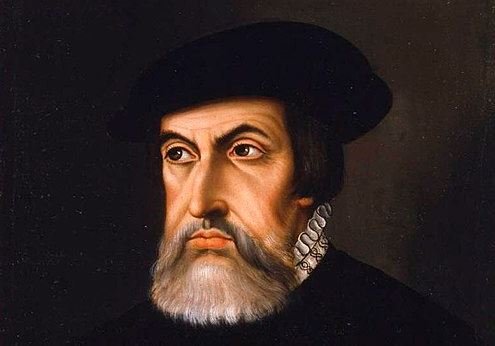
Hernán Cortés (1485 – 1547)
Over the centuries, Hernán Cortés has been scorned by many due to his involvement in years of abuse, killings and devastation amongst the natives in the Americas. In his defense, some historians have stated that his was pretty much the norm during Europeans’ conquest of the Americas. Regardless of this, Cortés cannot be excused from all the atrocities that he committed.
Cortés, like many of his fellow conquistadors, was responsible for infecting (unknowingly) the natives with terrible diseases such as smallpox, which killed millions of indigenous people.
Another brutal act of Cortés came in the form of mass conversion of the indigenous peoples into Christianity. He asked for several friars to be sent from Spain to Mexico. He was particularly cautious in doing so. He made sure that only friars, instead of secular priest or diocesan, performed the conversion.
Did you know: The Gulf of California used to be called the Sea of Cortes?
From the perspective of the Spanish Empire, he was hailed as a hero. Owing to his efforts, the Crown was able to stretch its tentacles wide and far into the Americas. Those new found territories brought unimaginable riches and prosperity to Spain.
Cortés certainly goes down in history as founder and builder of Mexico City. Although one mention of his name still elicits scorn and disgust from many people in Mexico today, Hernán Cortés undoubtedly occupies a unique and prestigious place in the history of both Mexico and Spain.
Personal life and family
All in all, Hernando Cortés is believed to have fathered quite a lot of children. He married twice. His first wife, Catalina Suárez, died under mysterious circumstances in November 1522. There were rumors floating about that Cortés was responsible. In any case, Catalina bore no children with Hernán Cortés.
In 1529, he got married to Doña Juana de Zúñiga. Unlike his first wife (Catalina), Cortés’s second wife was from a noble family. The couple gave birth to a son called Martín, who would become his heir and successor. Additionally, he had three daughters—Maria, Catalina, and Juana.
With regards to his illegitimate children, it is believed that he had several of them with the natives in Cuba and Mexico. He even worked tirelessly to have the Pope legitimize four of his illegitimate children. In his will, he was also generous to his surviving children, including the illegitimate ones and their mothers.
FACT CHECK: At worldhistoryedu.com, we strive for utmost accuracy and objectivity. But if you come across something that doesn’t look right, don’t hesitate to leave a comment below.
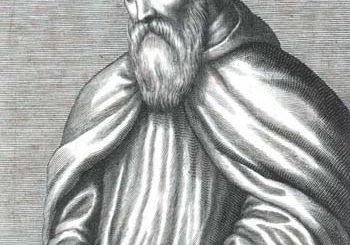

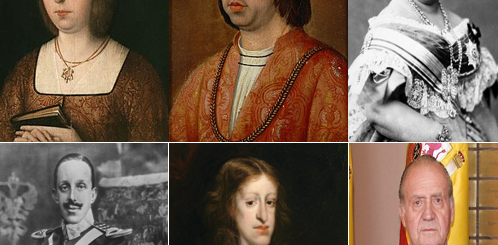

























Excellent historical account of Cortes